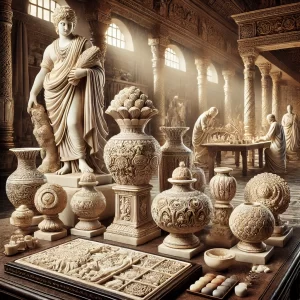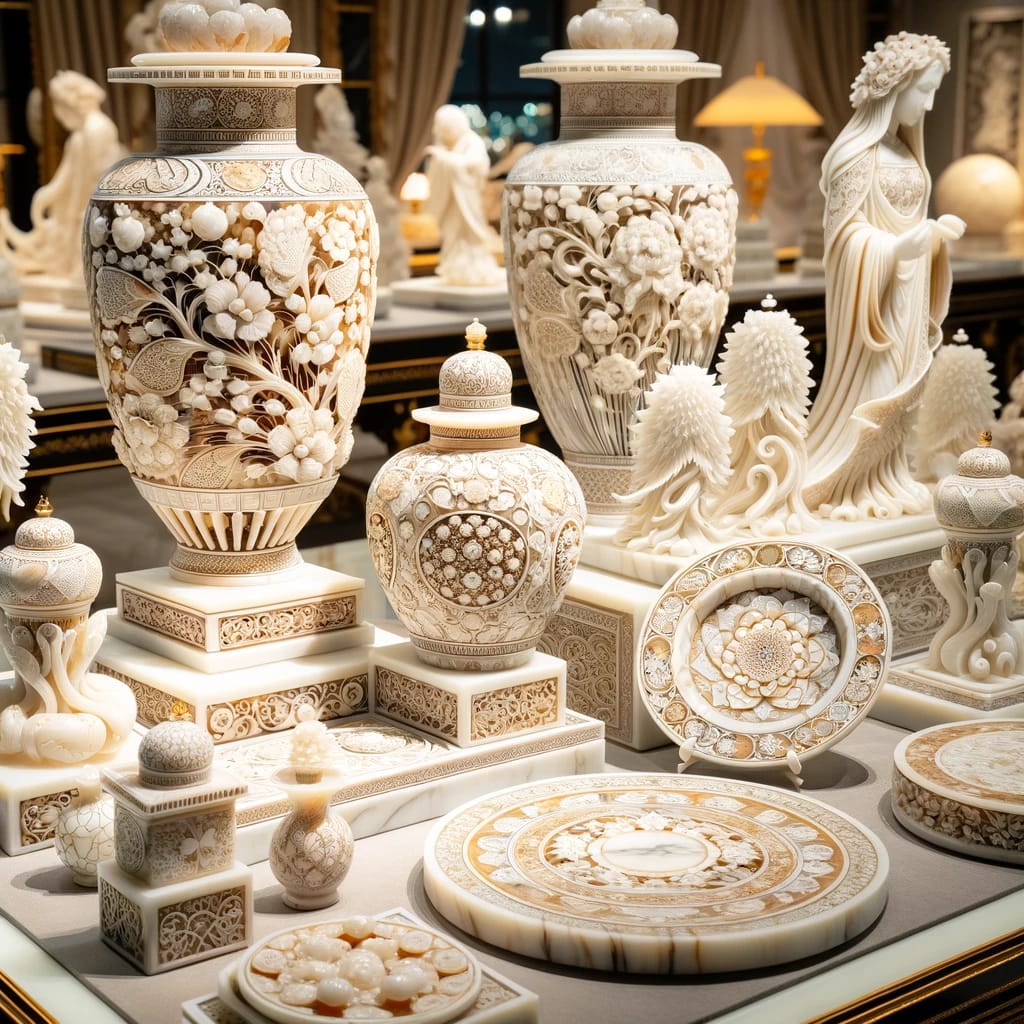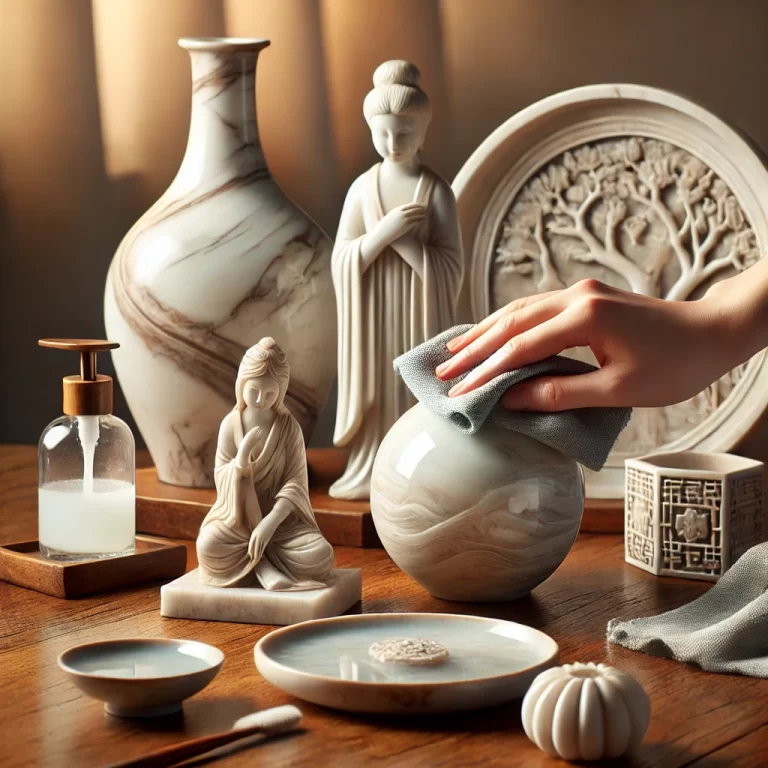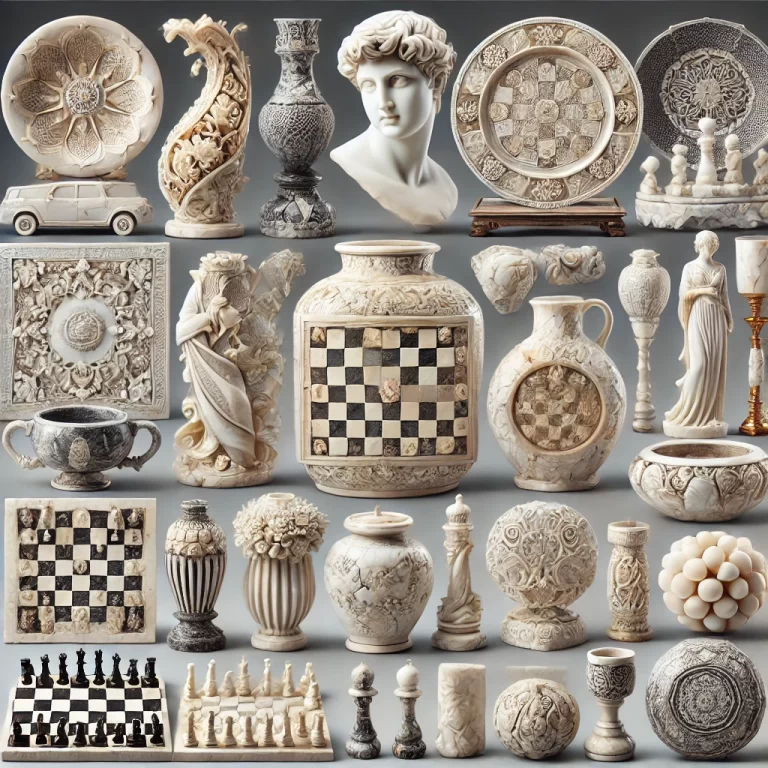The History and Significance of Marble Handicrafts has been an integral part of human civilization for centuries, shaping the artistic and architectural heritage of various cultures worldwide. The elegance, durability, and versatility of marble have made it a preferred material for sculptors, artisans, and architects. From the grandeur of ancient Greek sculptures to the intricate carvings of Indian handicrafts, marble continues to hold a special place in the world of craftsmanship.

The Historical Evolution of Marble Handicrafts
The use of marble in art and architecture dates back to ancient times. The Greeks and Romans extensively used marble to create stunning sculptures, temples, and monuments. The Parthenon in Greece and the Colosseum in Rome stand as timeless examples of marble’s grandeur. During the Renaissance period, master sculptors like Michelangelo used marble to craft breathtaking statues, including the iconic David.
In India, marble art flourished during the Mughal era, with the Taj Mahal being the most remarkable example of marble craftsmanship. The intricate inlay work, floral patterns, and symmetrical designs of this UNESCO World Heritage site highlight the exquisite skill of Indian artisans. Over time, marble handicrafts became a cherished part of Indian culture, with artisans passing down their skills through generations.
The Art of Marble Handicrafts
Marble handicrafts require immense precision, patience, and skill. Artisans use traditional tools and techniques to carve, sculpt, and polish marble into beautiful artifacts. The process involves:
Selection of Marble – High-quality marble is chosen based on texture, durability, and color.
Carving and Shaping – Using chisels and hammers, artisans intricately carve the marble into desired forms.
Inlay Work – Delicate gemstones and semi-precious stones are embedded into marble surfaces to create stunning patterns.
Polishing and Finishing – The final step involves polishing the surface to enhance its natural shine and beauty.
Significance of Marble Handicrafts
Marble handicrafts are not just decorative items; they symbolize cultural heritage, tradition, and artistic brilliance. Their significance lies in:
1. Cultural Heritage and Tradition
Marble handicrafts reflect the rich cultural heritage of different civilizations. The designs, motifs, and techniques used in creating these masterpieces often carry deep historical and regional significance.
2. Luxury and Aesthetic Appeal
The timeless beauty of marble makes it a symbol of luxury and sophistication. Whether in the form of sculptures, tabletops, vases, or home décor items, marble handicrafts elevate the ambiance of any space.
3. Economic and Artisanal Empowerment
Marble handicraft industries provide employment to thousands of skilled artisans. Supporting these crafts not only preserves the age-old traditions but also empowers local communities, especially in countries like India and Italy, where marble craftsmanship is deeply rooted.
4. Sustainable and Durable Art
Unlike mass-produced decorative items, marble handicrafts are long-lasting and sustainable. The natural stone ages gracefully, making it an eco-friendly and timeless choice for art lovers and collectors.
Modern Adaptations and Global Demand
With evolving trends, marble handicrafts have adapted to contemporary aesthetics while maintaining their traditional essence. Today, artisans create customized marble products that blend classic designs with modern styles. The demand for marble handicrafts has grown internationally, with collectors and interior designers incorporating them into luxury homes, hotels, and corporate spaces.
Additionally, online platforms have made it easier for artisans to showcase and sell their creations globally. Websites like balajitileshandicrafts.com are playing a significant role in promoting authentic marble handicrafts to a wider audience, ensuring that this ancient art continues to thrive in the digital age.
Conclusion
The History and Significance of Marble Handicrafts are more than just artistic expressions; they are a legacy of human ingenuity and cultural pride. Whether adorning a historic monument or enhancing a contemporary home, the charm of marble handicrafts remains unparalleled. By appreciating and supporting this art form, we contribute to the preservation of an age-old tradition that embodies craftsmanship, beauty, and heritage.







